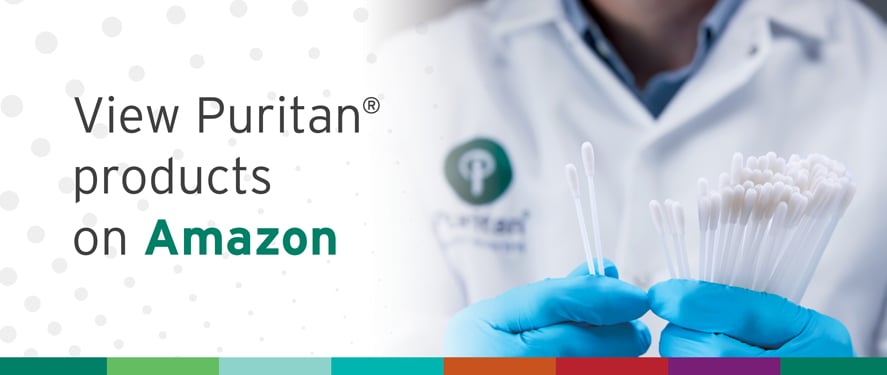
Cary-Blair medium is a specialized transport medium designed to preserve enteric bacteria during transit, ensuring reliable diagnostic results for gastrointestinal infections. Originally developed in 1964, this medium remains a gold standard for stool and rectal swab specimen transport, particularly in cases of foodborne illness outbreaks. By maintaining bacterial viability while preventing overgrowth, Cary-Blair medium is essential for public health, clinical microbiology, and food safety applications.
In this guide, we’ll explore what Cary-Blair medium is, how it works, when to use it, and why it remains a crucial tool for laboratories and healthcare providers worldwide.
What is Cary-Blair Transport Media?
Cary-Blair transport medium is a widely used transport medium designed to preserve enteric bacteria for clinical and laboratory testing. Its primary function is to maintain the viability of gastrointestinal pathogens, such as Salmonella, Shigella, Vibrio, and Campylobacter, during transportation from collection sites to diagnostic laboratories.
Originally developed by Cary and Blair in the 1960s, this medium has since become a gold standard for stool and rectal swab sample transport, particularly in cases of foodborne illness, gastrointestinal infections, and outbreak investigations.
Unlike nutrient-rich media that promote bacterial growth, Cary-Blair medium is formulated to minimize metabolic activity, preventing overgrowth of commensal flora while preserving the target pathogens. It is an essential tool in public health, clinical microbiology, and food safety industries, ensuring that viable bacteria reach the laboratory for accurate diagnosis and treatment guidance.
Why is it Named “Cary-Blair” Medium?
Cary-Blair medium is named after its developers, Sylvia G. Cary and Eugene B. Blair, who formulated it in 1964. Their research focused on improving the transport and viability of enteric pathogens like Salmonella, Shigella, Vibrio, and Pasteurella, which are likely to degrade quickly in traditional transport media.
Through their work, Cary and Blair created a low-nutrient, high-pH formulation that significantly extended the survival of these bacteria, making it an essential tool in clinical and public health microbiology.
When Should Cary-Blair Transport Media Be Used?
As the ‘gold standard’ in preserving enteric bacterial pathogens during transport, Cary-Blair medium has become indispensable across several settings where the accurate detection of gastrointestinal bacteria is critical.
Here are a few scenarios where Cary-Blair media is commonly used:
1. Clinical Diagnostics
You’ll find Cary-Blair medium is commonly used in hospitals, urgent care centers, and outpatient labs to transport stool or rectal swab specimens for patients presenting with GI infection symptoms.
It’s particularly handy when testing for pathogens like Salmonella, Shigella, Vibrio, Campylobacter, and E. coli O157:H7, as these pathogens can degrade quickly without the proper transport conditions in place.
Clinical use cases for Cary-Blair transport media include:
- Diagnosing foodborne illness in symptomatic patients
- Evaluating pediatric diarrhea with suspected bacterial etiology
- Supporting test-to-treat workflows for enteric infections
- Collecting samples for multiplex GI pathogen panels
2. Public Health Surveillance Initiatives
For epidemiologists and public health laboratories, Cary-Blair medium plays a vital role in outbreak response and disease surveillance. By maintaining bacterial viability over extended transport periods, it enables reliable testing of samples collected during community-wide investigations.
Public health use cases for Cary-Blair transport medium include:
- Outbreak tracing in schools, nursing homes, or foodservice facilities
- Routine surveillance for antimicrobial resistance (AMR) trends
- State and CDC-coordinated enteric pathogen monitoring programs
- Tracking prevalence of emerging strains, such as Vibrio parahaemolyticus
3. Remote and Field Collection Settings
In rural health centers, mobile clinics, international research sites, or disaster response zones, timely transport of clinical samples isn’t always feasible. For optimal recovery of C. difficile, fecal specimens should be refrigerated at 2-8°C and processed within 48 hours or stored at room temperature (20-25°C) and processed within 24 hours. Always refer to your package insert for more details.
Remote use cases for Cary-Blair transport media include:
- Collecting stool specimens during humanitarian missions
- Supporting global GI disease research
- Responding to waterborne outbreaks in underserved areas
Transporting rectal swabs from remote clinics to reference labs
The Composition and Properties of Cary-Blair Medium
Cary-Blair transport media typically consists of a semi-solid, low-nutrient formulation that provides an optimal environment for bacterial survival without promoting excessive replication.
The key ingredients include:
- Sodium Thioglycolate: Reduces oxidation, helping maintain an anaerobic or microaerophilic environment, which is particularly important for preserving Campylobacter and Vibrio species.
- Disodium Hydrogen Phosphate and Monopotassium Phosphate: Act as buffering agents, maintaining a stable pH to prevent bacterial degradation.
- Sodium Chloride: Helps maintain osmotic balance to prevent bacterial stress.
- Calcium Chloride: Supports cellular stability during transport.
- Agar: Provides a semi-solid consistency, preventing sample desiccation while ensuring uniform distribution of bacteria.
View Puritan’s Cary-Blair package insert for complete details.
One of the distinguishing features of Cary-Blair medium is its highly alkaline pH (~8.4-8.5), which inhibits bacterial degradation and neutralizes acidic byproducts that could harm the specimen. This alkaline environment is particularly beneficial for preserving Vibrio cholerae, a pathogen that is highly sensitive to acidic conditions.
How Does Cary-Blair Medium Work?
Cary-Blair medium functions by creating an environment that supports bacterial survival while limiting excessive growth. Its semi-solid nature prevents sample desiccation, ensuring that bacteria remain viable over extended transport times. Unlike enriched growth media, Cary-Blair medium provides minimal nutrients, preventing the rapid multiplication of bacteria that could outcompete the target pathogens.
The medium’s high pH level helps stabilize bacterial cell structures, preventing degradation during storage. Sodium thioglycolate reduces oxidation, which is especially crucial for microaerophilic organisms like Campylobacter, allowing them to survive transport without significant loss of viability.
By maintaining bacterial stability, Cary-Blair medium extends the window of opportunity for reliable pathogen detection, allowing laboratories to process samples with greater confidence.
Comparing Cary-Blair Medium to Other Transport Media
While Cary-Blair medium is one of the most reliable options for enteric pathogen transport, other transport media may be used depending on specific testing needs:
- Cary-Blair vs Stuart & Amies Transport Media: Stuart and Amies is designed for preserving aerobic and anaerobic bacteria from wound, throat, and genital specimens but less effective for enteric pathogens.
- Cary Blair vs Alkaline Peptone Water: Alkaline Peptone water is used primarily for Vibrio cholerae transport but does not support a broad range of enteric pathogens.
- Cary Blair vs Buffered Glycerol Saline: Buffered glycerol saline is suited for short-term Salmonella and Shigella preservation but lacks long-term viability support.
Cary-Blair remains the preferred choice for gastrointestinal specimens due to its stability, pathogen viability, and ease of use.
Regulatory Guidelines and Quality Control for Cary-Blair Medium
To ensure consistency and reliability, Cary-Blair medium must adhere to strict regulatory standards. The CDC and WHO recommend Cary-Blair medium for stool sample transport in epidemiological investigations. ISO and CLSI (Clinical & Laboratory Standards Institute) guidelines provide specifications for its preparation and use.
Laboratories must regularly test Cary-Blair lots for pH stability, sterility, and bacterial viability to maintain quality control.
Compliance with these guidelines ensures that Cary-Blair medium continues to provide accurate, reproducible results in diagnostic microbiology.
Link for further reading:
How to Use Cary-Blair transport medium
- Collect specimen from the rectum or from fresh stool.
- Remove vial cap and inoculate Cary-Blair medium with rectal or fecal swab specimen.
- Replace the vial cap, securing tightly. Record patient information in the space provided on the vial label and transport the specimen to the laboratory
Always check your product package insert for accurate instructions and applications. All clinical specimens may contain infectious microorganisms and should be considered biohazards and handled with care.
Appropriate personal protective equipment should be worn. Follow laboratory and biosafety guidelines when handling clinical specimens."
6 Best Practices for Using Cary-Blair Medium
Ensuring optimal specimen preservation requires following best practices for collection, inoculation, and transport.
- Always use a sterile swab or collection spoon to transfer a pea-sized amount of stool or rectal swab specimen into the Cary-Blair transport tube.
- Remember to fully immerse the sample in the medium, ensuring full contact but avoiding excessive dilution.
- Be sure to tighten the cap securely to prevent leakage or contamination.
- Keep your temperature in mind. Cary-Blair medium can maintain pathogen viability for up to 24 hours at room temperature.
- Remember that refrigeration is ideal. Samples should be stored at 2–8°C for best results, ensuring bacterial survival for up to 48 hours before processing.
- Avoid freezing Cary-Blair media. Freezing disrupts bacterial cell integrity, compromising diagnostic accuracy.
Commonly Asked Questions about Cary-Blair Medium
How long can a specimen remain in Cary-Blair before testing?
Ideally, specimens should be processed within 24–48 hours for best results, though viability may be maintained up to 72 hours under refrigeration.
Can Cary-Blair medium be used for viral or fungal transport?
No. Cary-Blair is specifically designed for bacterial pathogens and does not effectively preserve viruses or fungi.
Is Cary-Blair medium available in different formulations?
Yes, some variations exist, including pre-filled transport tubes and dehydrated powders for laboratory preparation.
Where can I purchase high-quality Cary-Blair medium?
Cary-Blair medium is available from reputable laboratory suppliers and diagnostic companies that adhere to regulatory quality standards.
Which leads us to…
Puritan Products with Cary-Blair Medium
When it comes to reliable specimen transport, Puritan offers high-quality Cary-Blair medium solutions designed to preserve enteric pathogens for accurate laboratory testing. Our transport systems ensure that Salmonella, Shigella, Vibrio, Campylobacter, and other gastrointestinal bacteria remain viable during transit, supporting precise diagnostics in clinical, public health, and food safety applications.
Puritan Products with Cary-Blair Medium
When it comes to reliable specimen transport, Puritan offers high-quality Cary-Blair medium solutions designed to preserve enteric pathogens for accurate laboratory testing. Our transport systems ensure that Salmonella, Shigella, Vibrio, Campylobacter, and other gastrointestinal bacteria remain viable during transit, supporting precise diagnostics in clinical, public health, and food safety applications.
Puritan Cary-Blair Medium, 2 ml
Cary-Blair transport medium for the preservation of fecal specimens containing enteric pathogenic bacteria
SKU #: CB-200
Puritan Cary-Blair Medium, 5 ml
Cary-Blair Medium for the preservation of fecal and rectal specimens containing enteric pathogenic bacteria
SKU #: CB-500
Puritan Fecal Opti-Swab Collection & Transport System
2 ml Cary-Blair Medium Filled Vial w/ One Sterile Elongated HydraFlock® Swab (25-3506-H)
SKU #: CB-206
Ensure accurate results and reliable pathogen detection with Puritan’s Cary-Blair transport solutions. Contact our sales team today to find the best option for your laboratory needs!
Sources for Further Reading
- Puritan Medical Products.
Cary-Blair Medium Product Sheet (PDF) – Specifications and use instructions for Puritan’s Cary-Blair medium and fecal transport systems. - Stuart RD, George R.
Transport of Specimens for Culture – A foundational review of specimen transport principles from Bacteriological Reviews, highlighting the development and function of transport media like Cary-Blair. - Centers for Disease Control and Prevention (CDC).
Guidelines for Specimen Collection During Foodborne Outbreak Investigations – Official guidance on collecting and transporting specimens for enteric disease detection during outbreaks. - CDC Cholera Laboratory Manual.
Chapter 2: Laboratory Methods for Diagnosing Epidemic Dysentery and Cholera (PDF) – Detailed recommendations on sample collection, use of Cary-Blair medium, and pathogen viability preservation. - CDC Job Aid.
Stool Collection and Transport to Cary-Blair Medium (PDF) – A practical job aid for healthcare providers collecting stool specimens for cholera and other enteric infections.




